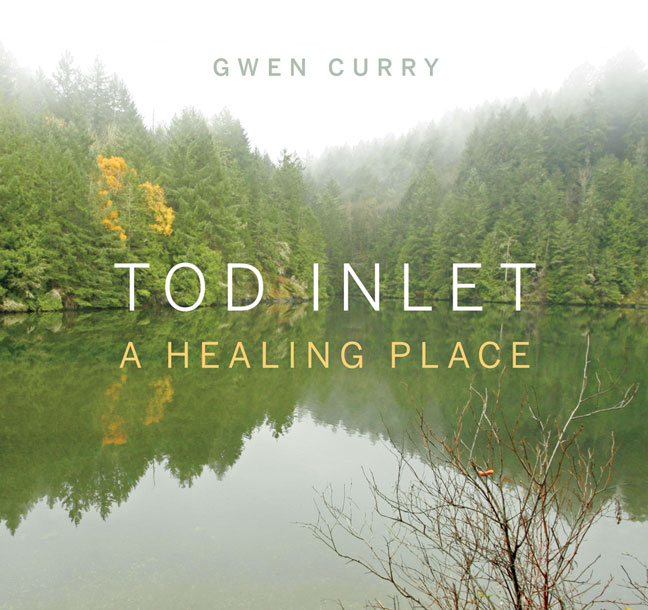Every inlet in B.C. deserves a book.
June 19th, 2015

Helen Piddington’s The Inlet: Memoir of a Modern Pioneer (Harbour 2001) recalls life in 35-kilometre-long Loughborough Inlet.
Ray Phillips recalls the varied history of Jervis Inlet, where he grew up, in The Royal Fjord: Memories of Jervis Inlet (Harbour, 2015).
Fisherman, trapper, logger and all-round West Coast guru Bill Proctor has given the world the lowdown on the Broughton Archipelago in Full Moon, Flood Tide (Harbour 2004).
Now Gwen Curry of Brentwood Bay has recorded the history and beauty of her nearest waterway for Tod Inlet: A Healing Place (Rocky Mountain $25).
 Even though it’s located only about half an hour from downtown Victoria, the tiny fjord of Tod Inlet is known as a “hidden gem” because it remains accessible only by boat or by walking. Through her prose and photographs, Curry pays tribute to its vibrancy and wildlife of Tod Inlet with Tod Inlet: A Healing Place (Rocky Mountain Press $25).
Even though it’s located only about half an hour from downtown Victoria, the tiny fjord of Tod Inlet is known as a “hidden gem” because it remains accessible only by boat or by walking. Through her prose and photographs, Curry pays tribute to its vibrancy and wildlife of Tod Inlet with Tod Inlet: A Healing Place (Rocky Mountain Press $25).
Tod Inlet was long home to the WSÁNE? (Saanich) people; then it became the twentieth century home to the Vancouver Portland Cement Company, the first cement production facility in Western Canada.
A marine dock, railway access and employee housing were constructed to serve the factory, and the nearby limestone quarries (which later became the Butchart Gardens) offered the necessary base material. The factory was on land owned by Peter Fernie when it was purchased in 1904 for the cement factory. The company’s manager was Robert Pim Butchart who moved into Fernie’s cottage with his wife Jennie Butchart, who would become the driving force behind Butchart Gardens. Cement was produced until 1921. Tod Inlet was Butchart’s third of seven plants he created.
Local filmmaker Gray’s two films, Searching for the Sikhs of Tod Inlet and Beyond the Gardens’ Wall, recall the hundreds of Sikh and Chinese workers who lived and worked on the shores of Tod Inlet during the cement-production years. Long after the limestone quarries were depleted, development plans for this quiet inlet included hotels, golf courses and a marina. First Nations, local citizens, scientists and environmentalists fought against the development, and it was preserved as part of Gowlland Tod Provincial Park in 1995. Since then wildlife has made a comeback. The non-profit SeaChange Marine Conservation Society has set up a floating information booth at the site.
As Curry makes clear, the inlet gained its name from Tod Creek that was named by Captain George Henry Richards in 1858 while surveying in HMS Plumper for the British Navy. Born in Loch Lomond in 1794, John Tod was an early Hudson’s Bay Company stalwart on Vancouver Island who was appointed to the first B.C. Legislature after retirement from the fur trade in 1794. A spiritualist and a storyteller, Tod owned a 100-acre farm in what is now Oak Bay.
Gwen Curry earned a Master of Fine Arts at Arizona State University and has taught Fine Arts at the University of Victoria.
9781771600767.


Leave a Reply